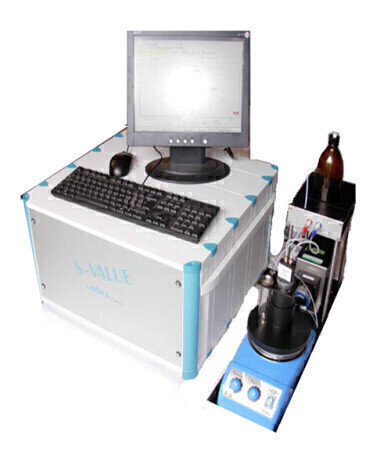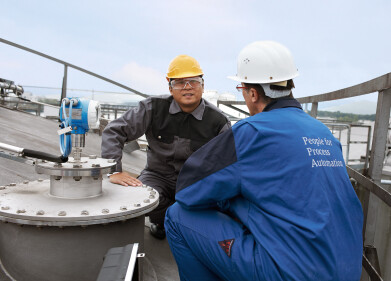Analytical Instrumentation
A Reliable Solution to Asphaltene Stability Measurement to ASTM D7157
Feb 11 2015
The ROFA (France) S-Value analyser, was produced, in collaboration with a major petroleum company, to offer refineries and their customers rapid and accurate fuel stability analysis. ROFA are specialists in the development of analysers and CRMs for the petroleum sector. Their S-Value Analyser conforms to ASTM Method D7157, is very user friendly and gives users a quick return on investment.
When a fuel is unstable a sludge can form. This is bad news for both the refiner, who will lose valuable stock due to precipitation, not to mention the associated problems from blockages in the process. The end user will also suffer loss of stock and other problems such as filter chocking in engines. These sludges can form when the fuel is made up from different cycle streams at the refinery, or when they have a mixture of different fuels. The use of visbreakers can lead to coke formation too, however, the resultant suspended particles are usually too small (less than 5 microns) to create a major problem in terms of engine blockage or other components such as fuel filters. One approach to this problem has been for refineries to moderate the use of the visbreaker and stream in an aromatic diluent. This reduces the level of viscosity to the desired level, whilst aiding the fuel stability and homogenisation. Another, more primitive method, still used at some refineries has been to ‘drop test’ by dropping a sample of fuel on to porous paper and checking the resultant rings, asphaltenes form small rings at the centre of the paper, whilst the oils form wider rings. This method, whilst low on cost, does not offer a great level of accuracy. The results from a drop test can vary significantly even when using the same fuel, the same paper and the same operator. Using this old fashioned method can make a stable visbroken fuel appear unstable, which usually results in the need for costly, additional blending materials and a restriction of the effectiveness of the visbreaker. Clearly a solution to this problem was needed – and ROFA have provided it with their S-Value Analyser.
The S-Value Analyser operates by performing three titrations to ensure optimum accuracy when determining the actual points of precipitation. A further ‘regressive’ analysis then ensures the accuracy of the analysis. Three separate mixtures from the sample are prepared with toluene (an aromatic solvent)and then titrated minutely with heptanes (a paraffinic solvent), thus three readings of the asphaltenes’ precipitation are taken through three optical probes. This analyser is computerised, working with Windows 7 based software. This unit includes a number of in-built safeguards and reminders to assist the operators. It measures three parameters: the stability of the sample, aromaticity of the asphaltenes (the ability of the asphaltenes to stay in colloidal dispersion) and the aromaticity of resins (their ability to maintain asphaltenes in colloidal The analyser comes complete with weighing scales, beakers, heaters optical probes, titration pumps etc. This versatile unit can handle large volumes of analytes cover the wide variety of feed stocks to the final, refined product, from crudes through to visbroken residues.
ROFA’s analyser allows optimum performance from the Visbreaker, with rapid, highly accurate and constant monitoring of the output’s stability. The S-Value Analyser has a unique ability to handle a large quantity of samples within a very short timeframe quickly and efficiently. An S-Value analyser can not only indicate the current stability of a fuel, but also show potential instability. This is an unsurpassed solution for operators of refineries to perform their analysis to ASTM 7157-05 and aim for optimal refinery performance.
This analyser is ideal for analysis of fuels in marine and stationary engines of diesel generating sets. In the case of these engines the viscosity stipulation is totally different at 180 CST maximum at 50 degrees Celsius. To reach this viscosity requirement , the visbreaker needs to be operated at a temperature of 470 degrees Celsius, which can make the fuel unstable. However, further usage of aromatic diluents have two major drawbacks, firstly the combustion quality of the fuel will dissipate due to the aromatic nature of the diluent and there will be significant value downgrade of a higher diluent stream to FO (the preventable wastage aspect).
Digital Edition
PIN 25.1 Feb/March
March 2024
In This Edition Safety - The technology behind the ION Science Tiger XT - Safety with ammonia and LOHCs as hydrogen carriers Analytical Instrumentation - Discussion on new tribology te...
View all digital editions
Events
Apr 22 2024 Hannover, Germany
Apr 22 2024 Marrakech, Morroco
Apr 22 2024 Muscat, Oman
Apr 22 2024 Rotterdam, Netherlands
Apr 23 2024 Singapore



















